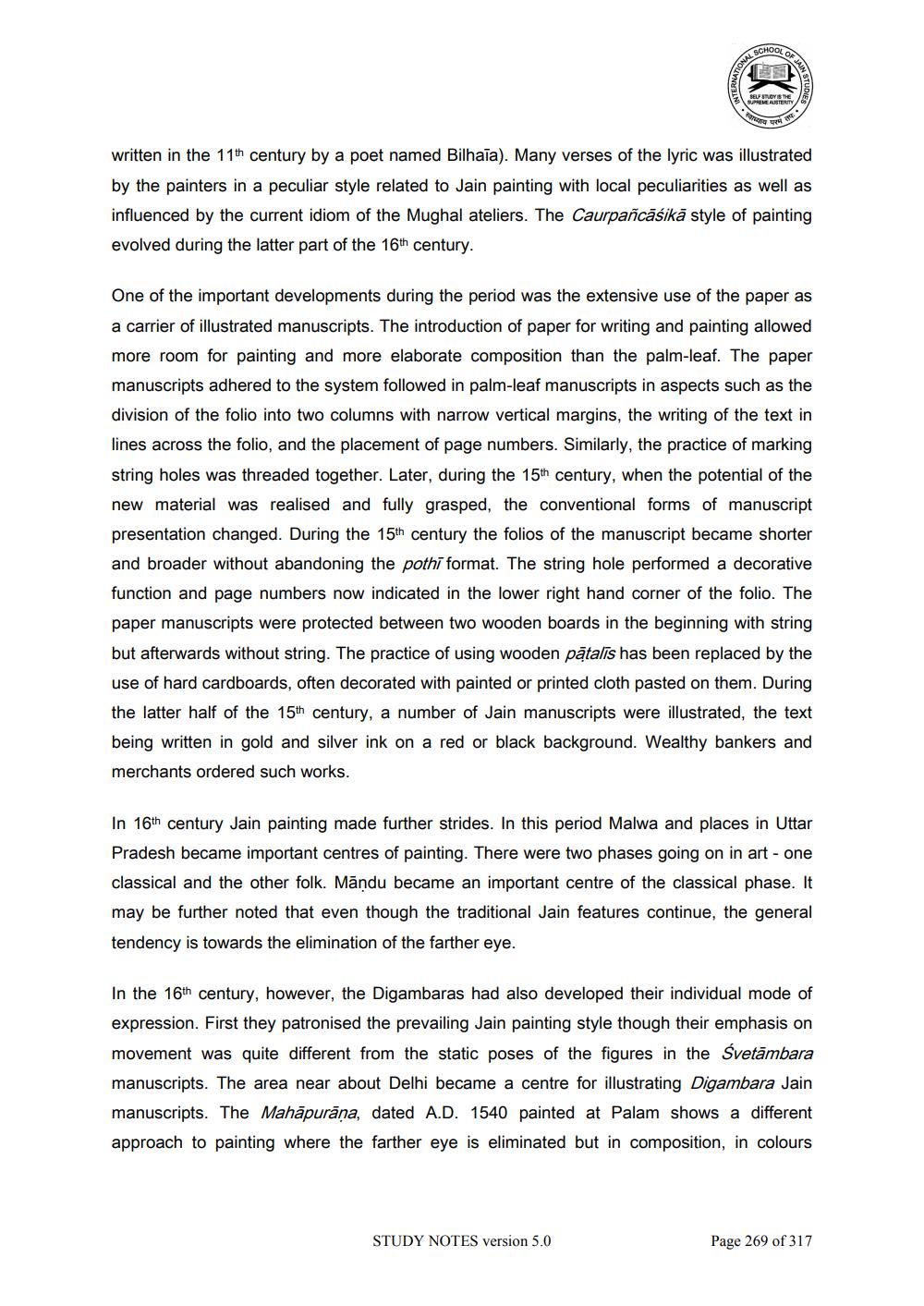________________
written in the 11th century by a poet named Bilhaia). Many verses of the lyric was illustrated by the painters in a peculiar style related to Jain painting with local peculiarities as well as influenced by the current idiom of the Mughal ateliers. The Caurpañcāśikā style of painting evolved during the latter part of the 16th century.
One of the important developments during the period was the extensive use of the paper as a carrier of illustrated manuscripts. The introduction of paper for writing and painting allowed more room for painting and more elaborate composition than the palm-leaf. The paper manuscripts adhered to the system followed in palm-leaf manuscripts in aspects such as the division of the folio into two columns with narrow vertical margins, the writing of the text in lines across the folio, and the placement of page numbers. Similarly, the practice of marking string holes was threaded together. Later, during the 15th century, when the potential of the new material was realised and fully grasped, the conventional forms of manuscript presentation changed. During the 15th century the folios of the manuscript became shorter and broader without abandoning the pothi format. The string hole performed a decorative function and page numbers now indicated in the lower right hand corner of the folio. The paper manuscripts were protected between two wooden boards in the beginning with string but afterwards without string. The practice of using wooden patalīs has been replaced by the use of hard cardboards, often decorated with painted or printed cloth pasted on them. During the latter half of the 15th century, a number of Jain manuscripts were illustrated, the text being written in gold and silver ink on a red or black background. Wealthy bankers and merchants ordered such works.
In 16th century Jain painting made further strides. In this period Malwa and places in Uttar Pradesh became important centres of painting. There were two phases going on in art - one classical and the other folk. Māndu became an important centre of the classical phase. It may be further noted that even though the traditional Jain features continue, the general tendency is towards the elimination of the farther eye.
In the 16th century, however, the Digambaras had also developed their individual mode of expression. First they patronised the prevailing Jain painting style though their emphasis on movement was quite different from the static poses of the figures in the Svetāmbara manuscripts. The area near about Delhi became a centre for illustrating Digambara Jain manuscripts. The Mahāpurāņa, dated A.D. 1540 painted at Palam shows a different approach to painting where the farther eye is eliminated but in composition, in colours
STUDY NOTES version 5.0
Page 269 of 317




